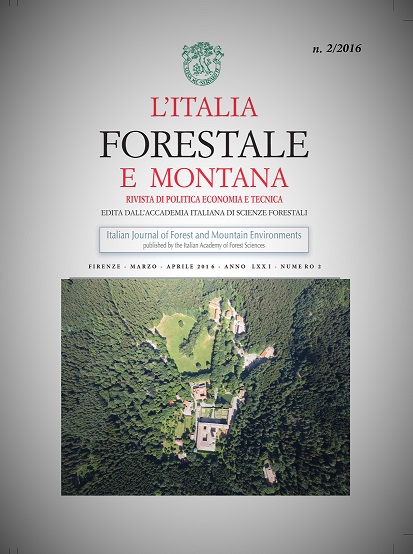Published 2016-06-09
Keywords
Copyright (c) 2016 Italian Journal of Forest and Mountain Environments

This work is licensed under a Creative Commons Attribution-NonCommercial 4.0 International License.
Abstract
Vallombrosa has a fundamental role for the promotion of a forestry culture and for the implementation of scientific progress in silviculture. The Vallombrosan Benedictine congregation was founded by Giovanni Gualberto in the 11th century. Starting from the 14th century the monks developed the silvicultural technique of clear felling and replanting silver fir. In 1866 the Vallombrosa Forest was transferred to the Italian State and the first Italian Forestry School was founded there in 1867. The State administration continued with the management model applied by the monks; the fir stands increased from 217 ha in 1878 to 680 ha in 1960. The management approach changed in 2006 when a new Forest management plan was drawn out which does not try to impose an optimal and predefined structure and composition on the forest but aims at favoring a gradual evolution towards more diversified systems, in terms of composition, structure, habitats and processes. On a small area around the Vallombrosa Abbey the plan has created a Silvomuseum where fir stands will be maintained by the traditional silvicultural treatment developed by the monks. In 2013 and 2015 very severe wind storms hit the forest creating extensive windbreaks in the fir stands. Because of various administrative reasons the 2006 Plan has been applied only on a very limited area, and so it has not been possible to verify if the new management approach has increased resistance and resilience of the fir stands to these extreme events. This points out the need for an active management of the forest because only the constant and informed action of the silviculturist can guarantee the conservation of this precious cultural and environmental asset.

